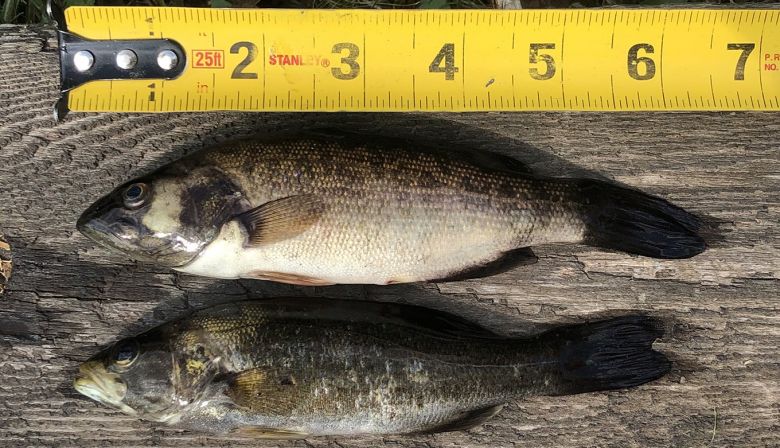
Subscribe & stay up-to-date with ASF

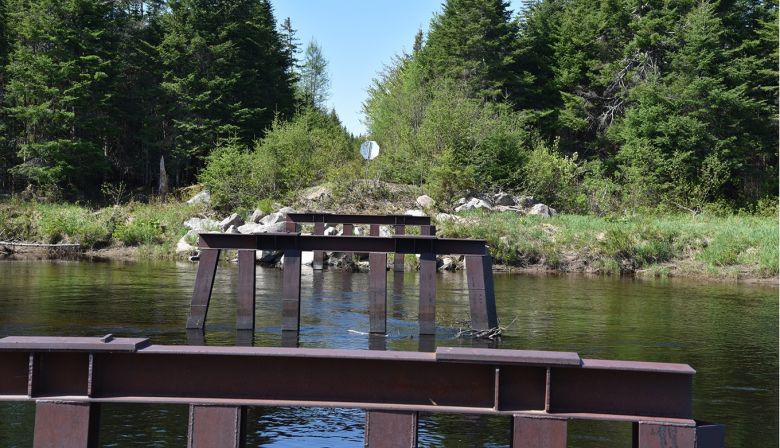
Last week ASF’s New Brunswick program director Nathan Wilbur and I launched a canoe at what’s known as the ice bridge on the Southwest Miramichi River.
It’s an important landmark, because the ice bridge is the likely starting point of a million-dollar program to eradicate smallmouth bass from the Miramichi watershed. These aquatic invaders were illegally introduced to Miramichi Lake sometime prior to 2008, and the first bass was caught in the Southwest Miramichi last August.
Our goal on this trip was to catch and kill any smallmouth we could and map the springs and brooks entering the river between the ice bridge and Moose Call Camp about 15 kilometers downstream, the current end point of the eradication project.
Unfortunately, we were successful on both fronts.
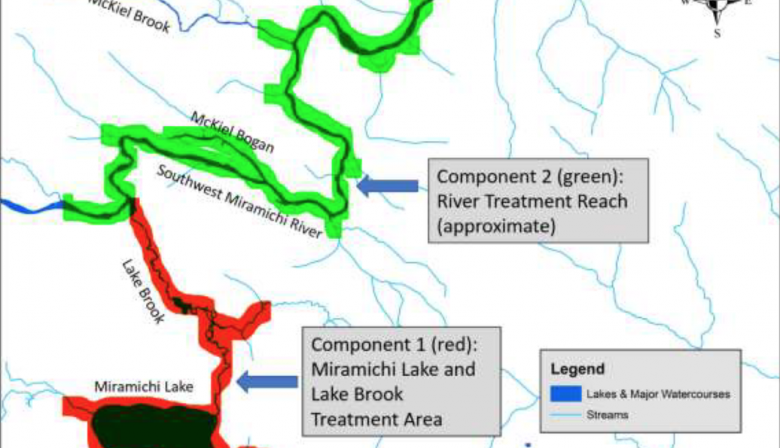
The discovery of smallmouth in the Southwest Miramichi compelled us to amend the application to eradicate that was submitted to DFO last year, and the department’s review was on hold waiting for new information, including answers to a couple rounds of questions from the regulator and an outline of the plan to use rotenone in the river.
Originally the scope of the project included Miramichi Lake, home to the only known established population of smallmouth in the watershed, and its outlet, Lake Brook, where bass have slipped past DFO’s barrier and been found periodically over the years.
With the help of experts and input from the project partners, on April 8th, 2020, the amended application to eradicate smallmouth bass from the Miramichi watershed was submitted to DFO and New Brunswick’s Department of Environment and Local Government.
Hitting send set up a push to the finish line for one of the one of largest direct conservation actions in New Brunswick history and the only known rotenone treatment we know of being led by First Nations organizations and NGOs, not public governments
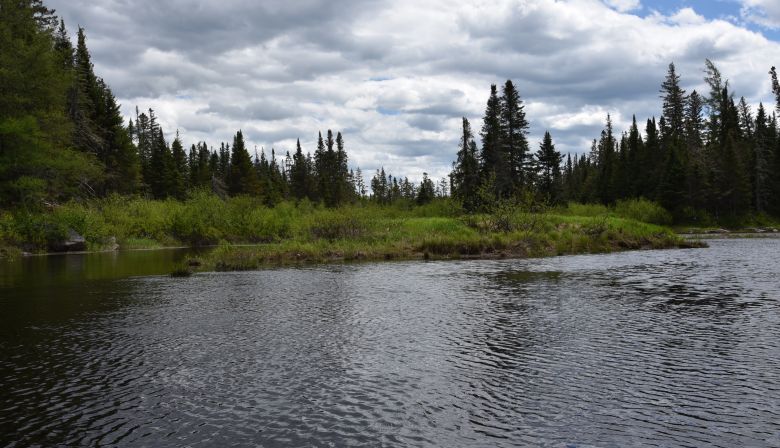
This includes measuring, and observing every spring, brook, and trickle enters the river between the ice bridge and Moose Call Camp. During treatment, a rotenone drip station needs to be set up wherever freshwater flows in or fish will find refuge.
We used an incredibly accurate wet areas map generated by Nathan Wilbur and pushed from bank to bank all the way down, stopping wherever the map told us and every time it was right, even where the water coming in was equal to the flow of a garden hose.
Another major task completed last week was securing functional access to strategic points along this relatively remote stretch of the river. Eradication will require pumps, steel drums, generators, batteries, and boats which can’t be easily carried through thick brush.
The landowner on both banks of the treatment area is J.D. Irving Limited. After getting a request from Working Group members for help, the company and its employees set to work cutting trails and building a boat launch into McKiel Pond Pool, a 300-meter slow-flowing deep section where smallmouth seem to be concentrated.
These are two significant items checked off the pre-treatment list. We still need data on water flows, chemistry and tree cover – because direct sunlight degrades rotenone quickly – but most of that information will be collected closer to go-time in order to be accurate.
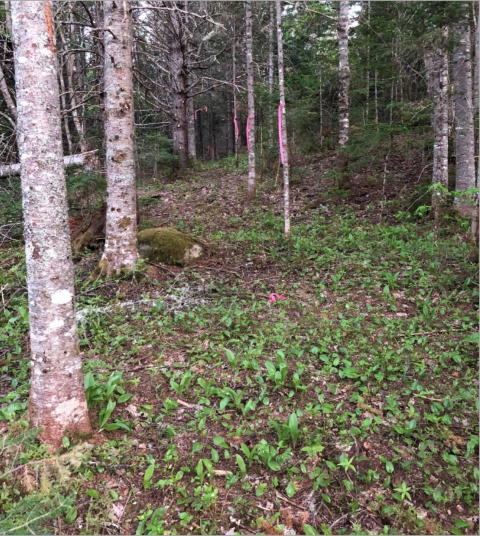
We tried worms, spinners, crankbaits, spinnerbaits, soft plastics, even some top water for show. At the mouth of Lake Brook where the river slows down and gets deep we pulled in chub after chub, and even some yellow perch, but no bass. In McKiel Bogan, a long finger of dead water where earlier sampling indicated smallmouth bass were present, we saw no signs of any fish.
At McKiel Pond Pool, where 24 smallmouth bass were removed by angling last year, we got a hit. On a bright pink Rapala I quickly jerked a tiny smallmouth bass to shore. We estimated it was two-plus years old.
Nathan and I continued to fish hard, adding to our impressive total of chub and perch. We even hooked a few small brook trout, but saw no other bass that first day on the water.
We continually scanned for signs of smallmouth spawning and found none, a good sign. At twilight we pushed on to the landing at Moose Call camp where our truck was parked, loaded up and looped back to the mouth of McKeil Brook for the night.
The next morning we joined senior biologist Chris Connell and Abbey Greer from New Brunswick’s Department of Natural Resources and Energy Development and focused angling on McKeil Pond Pool. We eventually hooked one more small bass and spotted at least four others.

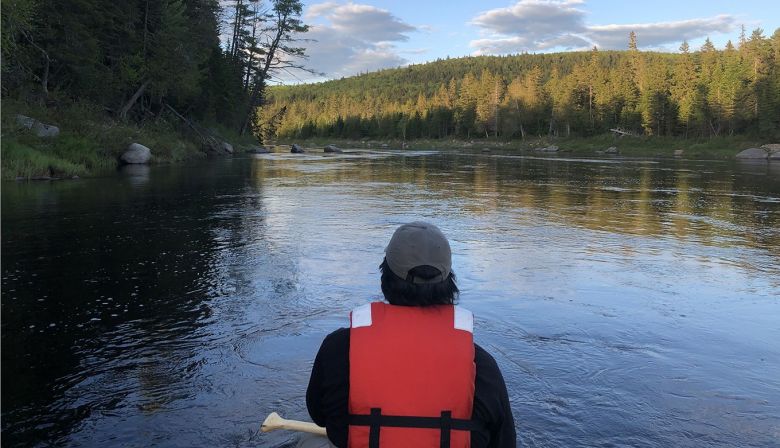
DFO is ready to begin a new round of environmental DNA testing in the Southwest Miramichi, covering a huge area from just below Juniper to Boisetown. Analyzing water samples with high-throughput genetic sequencing technology can detect DNA cast off in feces, mucus, and skin cells and revel the species of origin.
These tests, expected to be carried out later this months, will help define the limits of smallmouth bass in the river and will influence final eradication planning.
Most importantly, a decade of advocacy and years of working through the regulatory process is about to come to a head. Next week DFO is expected to provide the project partners an answer on the application to eradicate, a decision that will shape the future of of an entire ecosystem.
To learn more about this project and the use of rotenone in fisheries management visit http://www.miramichismallmouth.com
Neville Crabbe is executive director of communication with the Atlantic Salmon Federation, a member of the Working Group on Smallmouth Bass Eradication in the Miramichi. He can be reached at ncrabbe@asf.ca
